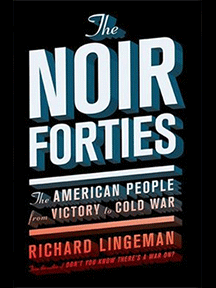By Benjamin Franklin Martin
According to Richard Lingeman, senior editor of The Nation, America’s political left believed that the “spirit of equality of sacrifice instilled by New Deal culture,” which became “a national ideal during the war,” would generate a future of domestic social democracy and international concord. Only five years after V-J Day, the United States had instead embraced repression at home and Cold War abroad.
In the wake of Rooseveltian-led recovery from the Great Depression and victory in war, the political right revived its attack on the version of America that was emerging in the 1930s and 1940s. A religious revival and promulgation of moral dogmas attacked the loosened strictures on sexual morality and racial segregation. Big business tempered the gains of labor unions through a rampant consumerism and the availability of new workers from among the veterans now returned home. Opponents of the New Deal found their scripture in Friedrich Hayek’s The Road to Serfdom(1944), with its argument that “socialism led directly to totalitarianism.” The American Medical Association denounced the proposal for government-financed health care as a “monstrosity of Bolshevik Bureaucracy.”
Stalin’s imposition of communist puppet-state dictatorships in the eastern European nations destroyed any dream of continuing the wartime amity. The Berlin Blockade in 1948 to 1949 and North Korea’s invasion of South Korea in 1950 brought the nightmare of Cold War. To confront the Soviet Union, the United States proclaimed the Truman Doctrine, distributed Marshall Plan aid, formed the North Atlantic Treaty Organization, and sent troops to defend South Korea. The revelation of Soviet spies stealing atomic bomb secrets generated a “Red Scare” that led in 1950 to Joseph McCarthy’s wild accusations of communists hiding throughout the government and to the McCarran Act, which required communists to register and barred them from holding office.
The perceived threat led to fundamental new institutions: the organization of the military services under the Department of Defense and the creation of the Central Intelligence Agency and the National Security Council in 1947, then the enactment of the first peacetime draft with the Selective Service Act of 1948. The strategy for the Cold War, “containment of the Soviet Union,” first proposed by George Kennan’s “Long Telegram” in February 1946, became the official national security policy in September 1950 with the adoption of NSC 68.
Lingeman deplores this regression from “chances missed, choices made, roads not taken.” He claims that the films noirs of the late forties “seemed to catch the paranoia, the deception, the mendacity” of the period. For an alternative, he presents his protagonist, Henry A. Wallace, Franklin D. Roosevelt’s vice president from 1941 to 1945. When Wallace ran for president in 1948 as the nominee of the Progressive party, he called Democrats “the war party,” opposed the Truman Doctrine and loyalty programs, supported racial integration, and accepted Communist support.
Of course, Wallace won only 2.4 percent of the popular vote, finishing behind even Strom Thurmond and the Dixiecrat party. Afterward, he said of Harry S. Truman, who had won reelection as president of the United States, “under no circumstances will I congratulate that son of a bitch.” From the tone and style of this book, Lingeman appears to be just as angry that history did not turn out his way.
Benjamin Franklin Martin (ΦΒΚ, Davidson College, 1969) is the Price Professor of History at Louisiana State University and a resident member of the Beta of Louisiana chapter of Phi Beta Kappa.




